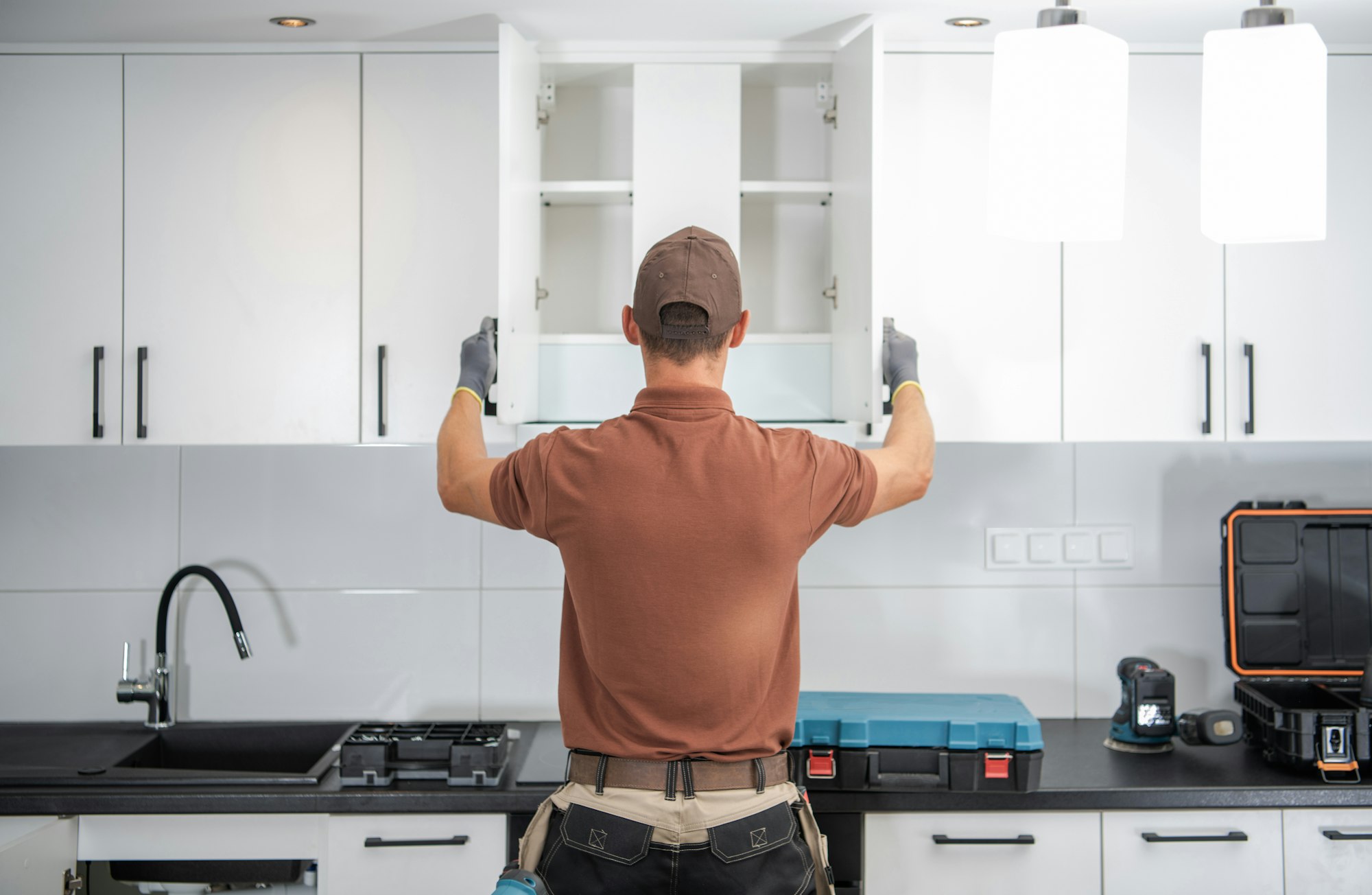Everything You Need to Know About Installing Cabinets
Introduction
Cabinet installation is crucial for any kitchen renovation or new construction. Whether upgrading your existing kitchen or starting from scratch, properly installed cabinets can significantly improve functionality and aesthetics. This comprehensive guide covers everything you need to understand about cabinet installation. It emphasizes the importance of hiring skilled professionals, offers a step-by-step guide for DIY installation, discusses common mistakes to avoid, provides tips for finding reliable cabinet installers locally, and answers frequently asked questions to help ensure your project goes smoothly.
Why Hire Professional Cabinet Installers
Hiring professional cabinet installers is often the best choice for ensuring your kitchen cabinets are installed correctly and efficiently. Here are some reasons why you should consider hiring professionals:
- Expertise and Experience: Professional cabinet installers have the experience and skills necessary to handle any installation challenges that may arise. They can ensure your cabinets are level, secure, and properly aligned.
- Time-Saving: Sometimes, putting in drawers takes a long time, especially if you have never done it before. Hiring professionals can do the job quickly and correctly, giving you more time to do other things.
- Quality Assurance: With professional installation, you can be confident that your cabinets will be installed to the highest standards. This ensures longevity and durability, preventing future issues.
- Tools and Equipment: Professional workers have easy access to the necessary tools and gear. This will not only give you a good finish but also prevent damage to your cabinets and kitchen.
- Peace of Mind: When hiring professionals to do the job, you can relax, knowing it will be done safely. This is especially important for setups that are hard to understand or for custom cabinets.
Preparing for Cabinet Installation
Measuring and Planning
Before you begin the installation process, measuring and planning your kitchen layout accurately is essential. This includes:
- Measuring Your Space: Find out how big your kitchen is, including the length, width, and height of the spot where the cabinets will go. Make sure you think about any windows, doors, or machines.
- Planning Your Layout: Plan the layout of your cabinets, considering the placement of upper and lower cabinets, corner cabinets, and any specialty cabinets such as pantry or appliance cabinets. Use graph paper or kitchen design software to visualize the layout.
- Checking for Obstructions: Identify any potential obstructions, such as plumbing, electrical outlets, or vents, that may affect the placement of your cabinets. Plan around these obstacles to ensure a smooth installation.
Choosing the Right Cabinets
Selecting the right cabinets for your kitchen is crucial for both functionality and aesthetics. Consider the following factors:
- Material: Choose cabinets made from high-quality materials such as solid wood, plywood, or MDF. Each material has pros and cons, so consider your budget and preferences.
- Style: Pick a style of cabinet that goes well with the rest of your kitchen. Shaker, flat-panel, and raised-panel cabinets are all popular styles. Think about which finish and color will best suit your home’s style.
- Storage Needs: Write down all the things you need to store, then pick cabinets that can hold them. For ease of use, look for lazy Susans, pull-out shelves, and deep drawers.
- Quality: Look for cabinets with sturdy construction, such as dovetail joints and soft-close hinges. High-quality cabinets will withstand daily use and provide long-lasting durability.
Step-by-Step Guide to Installing Kitchen Cabinets
Tools and Materials Needed
Get all the tools and materials you’ll need to install cabinets together before you start. Some of these are:
- Measuring tape
- Level
- Stud finder
- Screwdriver or drill
- Screws and brackets
- Shims
- Carpenter’s pencil
- Clamps
- Wood filler
- Caulk
- Safety gear (gloves, safety glasses)
Removing Old Cabinets
- Clear the Area: Remove all items from your existing cabinets and clear the workspace. Cover countertops and appliances to protect them from dust and debris.
- Turn Off Utilities: If your cabinets are near plumbing or electrical outlets, turn off the water supply and power to avoid accidents.
- Remove Cabinet Doors and Hardware: Remove the old cabinets’ doors, hinges, and hardware with a screwdriver or drill. If you want to use the doors and hinges again, mark them.
- Detach Cabinets: Locate the screws or nails securing the cabinets to the wall and carefully remove them. Start with the upper cabinets before moving to the lower cabinets. Have a helper support the cabinets as you remove the fasteners to prevent damage or injury.
Preparing the Space
- Check for Level: Use a level to ensure your walls and floors are even. If necessary, use shims to level the surfaces before installing the cabinets.
- Locate Studs: Use a stud finder to find the studs in your walls. Mark where they should go with a pencil, as you must attach the cabinets to the studs for support.
- Make Necessary Repairs: Before you put in your new cabinets, fix any broken drywall or flooring. This will ensure that your new cabinets fit perfectly.
Installing Upper Cabinets
- Mark the Layout: Using a pencil and level, mark the layout of your upper cabinets on the wall. This includes the top and bottom edges and the stud locations.
- Install Support Rails: If your cabinet set includes support rails, install them according to the manufacturer’s instructions. These rails will help support the cabinets’ weight during installation.
- Mount the First Cabinet: Start with a corner closet if you have one. Line up the cabinet with the lines you made on the plan, and then use screws to attach it to the wall studs. Hold the cabinet in place while you work with clamps.
- Attach Adjacent Cabinets: Continue installing the adjacent cabinets, ensuring they are level and aligned with the first cabinet. Use screws and brackets to secure each cabinet to the wall and each other.
Installing Lower Cabinets
- Mark the Layout: Similar to the upper cabinets, mark the layout of your lower cabinets on the floor and walls. Ensure you account for the height of the countertops.
- Install Base Cabinets: First, align the corner or end cabinet with your plan marks. Level the cabinet with shims if you need to, and then screw it to the wall bolts.
- Attach Adjacent Cabinets: Continue installing the remaining base cabinets, ensuring they are level and aligned with each other. Use screws and brackets to secure the cabinets to the wall and each other.
Finishing Touches
- Install Countertops: Once the base cabinets are securely in place, install your countertops according to the manufacturer’s instructions. Ensure they are level and properly supported.
- Add Cabinet Doors and Hardware: Reinstall the cabinet doors and add any new hardware, like buttons or handles. Adjust the hinges to ensure the doors open and close smoothly.
- Seal and Finish: Caulk the spaces between the shelves and the walls. Fill in any holes or other flaws in the wood with wood filler. If necessary, paint or seal it to make it look better.
Common Mistakes to Avoid in Cabinet Installation
- Inaccurate Measurements: Ensure your measurements are precise to avoid cabinet fit and alignment issues.
- Ignoring Wall Studs: Always secure cabinets to wall studs for stability. Avoid using drywall anchors alone, as they may not support the weight of the cabinets.
- Improper Leveling: Use a level and shims to ensure your cabinets are perfectly level. This prevents doors from swinging open or uneven countertops.
- Rushing the Process: Take your time with each step of the installation process. Rushing can lead to mistakes and poor-quality results.
Tips for Finding Cabinet Installers Near You
- Research Online: Use search engines and review sites to find cabinet installers near you. Look for companies with positive reviews and a strong reputation.
- Ask for Recommendations: Find out what your friends, family, and neighborhood think. Referrals from friends and family can tell you a lot about the level of work and customer service.
- Check Credentials: Ensure the installers you consider are licensed, insured, and certified. This protects you from liability and ensures professional standards.
- Request Quotes: Get quotes from more than one technician so you can compare services and prices. If a quote is too low or too high, it could mean that the work will not be done well or that there are hidden fees.
- Review Portfolios: Look at the installer’s past work to get an idea of their quality and style. This will let you know if their work meets your needs.
Frequently Asked Questions (FAQs)
How much does it cost to install kitchen cabinets?
The cost of installing kitchen cabinets varies based on factors such as the type of cabinets, kitchen size, and location. On average, professional installation can range from $2,000 to $8,000, depending on the job’s complexity.
Where can I find reputable cabinet installers near me?
You can find reputable cabinet installers near you by searching online directories, asking friends and family for recommendations, or contacting local home improvement stores for referrals.
How do I choose the right kitchen cabinets for my home?
Choose kitchen cabinets based on material quality, style preferences, storage needs, and budget. Consider durability, design aesthetics, and functionality to find cabinets that suit your home and lifestyle.
Conclusion
Installing kitchen cabinets is a significant project that can transform the look and functionality of your kitchen. Whether you hire professional cabinet installers or tackle the job yourself, planning carefully, using the right tools and materials, and following best practices to ensure a successful installation is essential. By avoiding common mistakes and doing the job correctly, you can enjoy beautiful, durable cabinets that enhance your kitchen for years to come.
For a hassle-free kitchen cabinet installation experience, get free quotes at contractorhomequotes.com!
Free Contractor Quotes: A Homeowner’s Guide to Smart Hiring
Get free contractor quotes to confidently plan your home project. Our guide explains how to compare quotes, avoid hidden costs, and hire the right pro for your budget.
Finding a Reliable 24 Hour Contractor Near You
Discover how to find and choose a reliable 24 hour contractor for home emergencies. Learn when to call, what to expect, and how quick action saves you time and money.
Understanding Your Plumbing Quote: A Homeowner’s Simple Guide
Confused by plumbing quotes? Our simple guide helps homeowners understand costs, compare estimates, and choose the right professional for lasting repairs.
Find a Pro!
"*" indicates required fields








